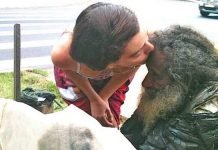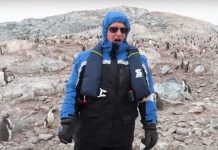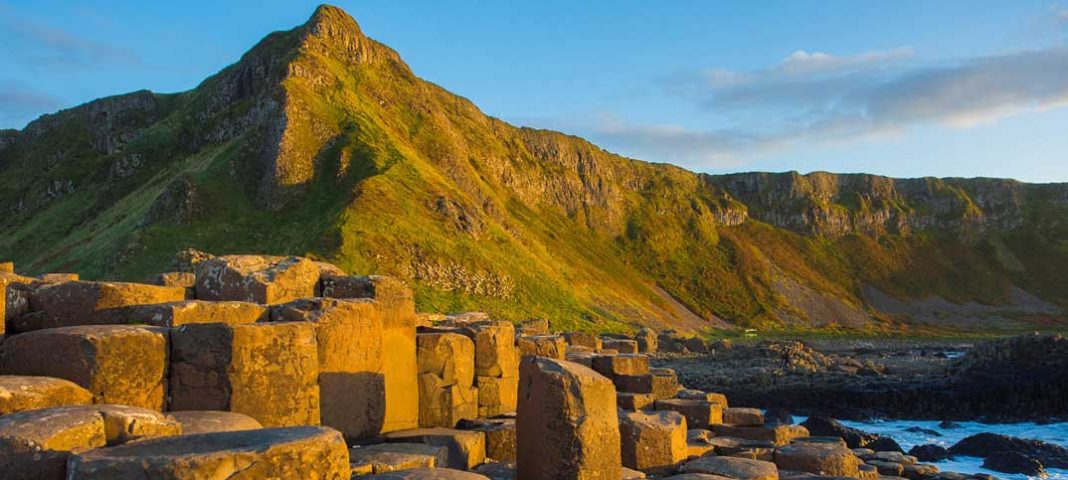DAVE AND DEB BOUSKILL
After nearly a decade in the film business, Dave and Deb Bouskill quit their day jobs in pursuit of a dream lifestyle — traveling the world, photographing and writing about their adventures.
Today, the fruits of their labor are evident in the couple’s acclaimed and hugely successful travel blog, The Planet D — in 2014, the blog won the Gold medal for Best Travel Blog and Best Illustration of Travel by the Society of American Travel Writers.
“We had always been avid travelers,” says the couple, explaining that during their careers they would take winters off to go globetrotting. “Over the years, we felt more comfortable on the road than at home, and we started to search for ways to make travel a full-time career.”
The launch of the blog started with Dave and Deb cycling the continent of Africa from Cairo to Cape Town (the Tour D’Afrique) and documenting their adventure in 2008. “We felt that we needed something epic to stand out from other travel couples — and it worked. Also, because we had so many years of travel to dozens of countries, we had many stories to tell. People started to relate to our experiences, and over time our audience grew.”
Below are some of the most captivating shots from their journey.
IRELAND
In Northern Ireland, Dave and Deb spent some time exploring the lush, green countryside and historical landmarks like the Castle Ward boathouse. They were blown away by the scenery.
“We had heard of the Giant’s Causeway many times before visiting Northern Ireland, but didn’t comprehend how incredible it was,” they say. “We like to be surprised when we travel, so we didn’t look at photos or do any research on the Causeway. It was mind-blowing to see thousands of perfect hexagonal basalt columns leading out to the sea.”


We love trying new things and experimenting with new ways of working with people, and we are constantly coming up with new and exciting ways to share our story.




Dave Bouskill’s favorite shot — and one of the most difficult to capture — is of the raging seas of Ballintoy Harbour in Northern Ireland.
“Most people miss this little harbor when going around the Causeway Coastal Drive, as it is set a bit off the main road. It is also closed to bus traffic, which made it a much quieter spot than some of the other really busy stops on the Coastal Highway,” he says.

I love this shot because it gives you the sense of what those raging seas are like, but by smoothing out the water, it invokes a sense of calm.
“The beauty of this location is that you can get really close to the sea and there a ton of vantage points from which to photograph. This shot was taken from a rocky shoreline just behind the little restaurant,” says Dave. “As I set up my tripod, I framed up the shot of the coastline and used a six-stop ND filter to slow my shutter speed enough to get that silky water effect. Timing was critical as I wanted to make sure that I got the water smashing over the rocks to give it a little bit more of an artistic feel.”
Part of the difficulty of this shot is the landscape itself — conditions are less than ideal.
“Between the howling wind, the sea spray on my filter and the long exposure, it was a constant battle to get a shot that was both sharp and not full of water spots. It took me quite a while to get the shot I wanted, but in the end it is always worth the struggle,” says Dave.


HONG KONG
Despite Hong Kong’s reputation as a bustling metropolis, Dave and Deb say they spent a good deal of their time there visiting quiet destinations, like the Ten Thousand Buddhas Monastery.
“We never expected Hong Kong to have a countryside,” says Bouskill. “When traveling to Hong Kong for the second time, we were surprised to see how much of it is mountainous, uninhabited terrain. Only 30% of Hong Kong is developed, and we made our way outside of the city for a boat ride to the Geo Park, where there are hiking trails and rocky beaches.”



When I was in Hong Kong walking through a market, the people intrigued me. When I enter a temple, I am fascinated with details.

From the urban adventure of Hong Kong to the wild coast of Northern Ireland, it has been exciting to showcase adventure in every situation.

GREECE
The ancient ruins of Athens and the sunsets and landscapes in Santorini provide the type of subjects that photographers dream about — though the shots, again, aren’t easy to get.
“The most difficult part of travel photography always seems to be fighting the crowds at a popular tourist destination,” says Dave. “It takes a lot of patience to wait for the moment free of people walking through the frame, kicking your tripod while shooting a long exposure or refusing to move.”
The wait, he says, is well worth it for the perfect shot.
“In destinations like Santorini, I love waking up early for sunrise or staying out for sunset. I love the way the light plays on the architecture as the sun sets over the sea,” he says.



“We had seen photos of Santorini before, but we weren’t prepared for the beauty of this island. It doesn’t seem real,” says the couple.
“When you walk up to the edge of the caldera and see the blue and white towns stretching along the high sea cliffs, it takes your breath away. We can understand why this is one of the most romantic places on earth.”



When it comes to specific photography techniques, Dave Bouskill says that his methods vary on a scene-by-scene basis.
“When I am shooting landscapes, I almost always bracket my shots,” he says. “This allows me to blend exposures in post-editing if needed, and gives more of a true representation of the scene. Also, whenever I am shooting seascapes I always try to use long exposure techniques by combining different ND filters to slow down my shutter speed and achieve the look I want.”
When people are the subject of the photo, Dave uses shallow depth of field so that the focus is on the person instead of a potentially distracting background.
“I love how photography is subjective. Each photographer can interpret a scene differently, and I think it is an art form that allows the photographer to be as creative as he wants to be. You can have the scene showcase what you felt in that moment. And that is what connects people to art: Emotion.”
That is what connects people to art: Emotion.















